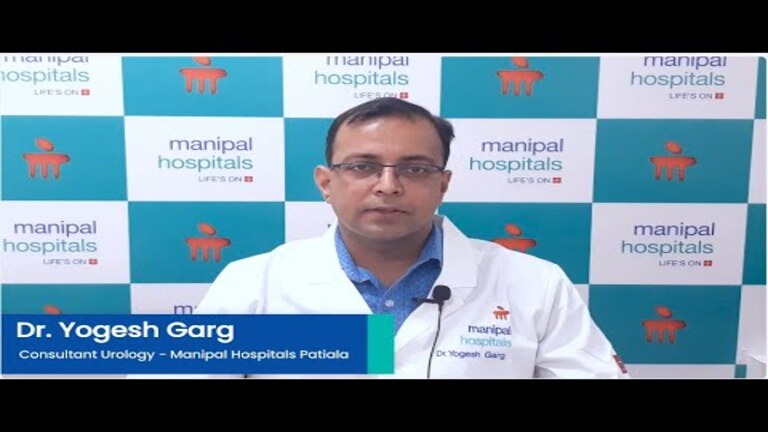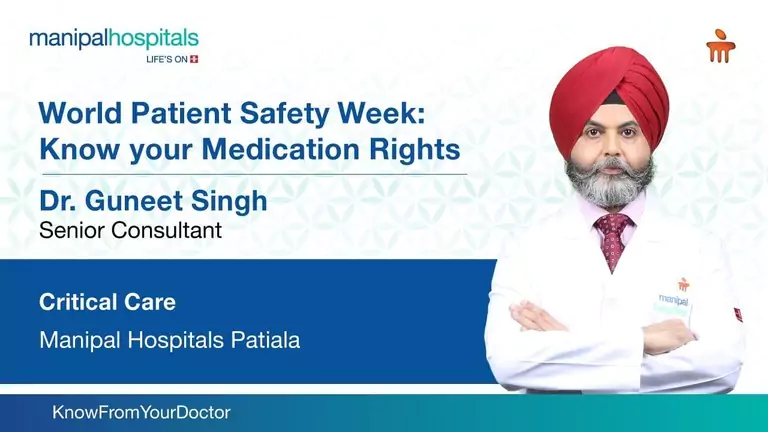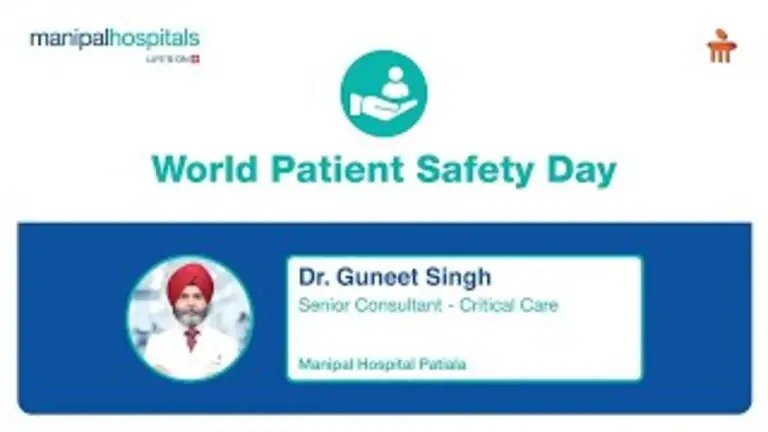-
Book Appointments & Health Checkup Packages
- Access Lab Reports
-
-
Book Appointments & Health Checkup Packages
-
Centre of
Excellence
Centre of Excellence
Other Specialities
- Anesthesiology
- Bariatric Surgery
- Dental Medicine
- Dermatology
- Diabetes and Endocrinology
- Ear Nose Throat
- Genetics
- Infectious Disease
- Internal Medicine
- Kidney Transplant
- Laboratory Medicine
- Microbiology
- Nutrition And Dietetics
- Ophthalmology
- Paediatric And Child Care
- Paediatric Surgery
- Pain Medicine
- Physiotherapy
- Plastic, Reconstructive And Cosmetic Surgery
- Psychiatry
- Pulmonary Medicine
- Radiology
- Rheumatology
- Doctors
- Patiala
- International Patients



Clinics








- Self Registration
- In-Patient Deposit
- Mars - Ambulance
- Home Care
- Privilege Card
- Corporate & PSU
- Insurance Helpdesk
- Awards And Achievements
- Careers
- Contact Us


ICU and Critical Care
ICU Hospital Near me
Manipal Hospitals is a leading multi-speciality healthcare providers in the country with a highly advanced ICU (Intensive Care Unit) or critical care unit in Patiala, Punjab. The ICU department manages the dedicated spaces wherein patients get intensive care medicines and are monitored round the clock in a sterile environment, under the supervision of experienced physicians, surgeons and trained nurses. Our ICU is also an intensive therapy or treatment unit, that offers emergency and ambulance services in Patiala. Unstable patients with undiagnosed illnesses, trauma and life-threatening diseases are kept stable in the intensive care unit. The patients get full attention and get treatment at regular intervals at our Patiala facility as its one of the finest ICU hospitals in Patiala.

OUR STORY
Know About Us
Why Manipal?
Manipal hospital is the best critical care hospital in Patiala. The ICU and critical care department are state-of-the-art and boast the latest technology and medical machinery for the utmost patient care. The monitoring systems provide the first level of diagnostic screening for patients.
The ICU department upholds the highest hygiene standards to maintain a sterile and infection-safe environment. Patients get life-saving treatments from highly trained multi-specialty healthcare providers, respiratory therapists, doctors, nurses, and counselors. The multidisciplinary team of doctors is readily available to assist in emergencies. Consult with our critical care experts at our multi-specialty hospital in Patiala.
In time-critical emergencies, the doctors at the ICU provide the preliminary diagnosis before referring it to a specialist to take the treatment forward. The highly trained nursing staff responds to critical care environments to support patients with immediate response times. Manipal hospitals offer emergency and ambulance services in Patiala so the patients can get immediate treatment in time. Book an appointment now at critical care hospital in Patiala.
Treatment & Procedures
Tracheostomy
In some cases, when a patient's airways are restricted, an emergency tracheostomy is performed to allow a tube to go directly from a ventilator to the patient's windpipe through a precise incision on the neck. The procedure allows the patient to breathe while other diagnostic approaches and treatments are considered.

Who Needs Critical Care?
Patients with life-threatening injuries and illnesses need intensive care. Some of these are:
-
Heart Attack
-
Heart Failure
-
Severe Bleeding
-
Serious Infections
-
Covid-19
-
Severe Burns
-
Kidney Failure
-
People recovering after Surgeries
-
Shock
-
Stroke
-
Serious Injuries
-
Sepsis
-
Respiratory Failure
-
Multi-organ Failure
What Happens in a Critical Care Unit?
In an intensive care unit, the doctors and nurses use different machines and equipment like
-
Dialysis machines (for patients with kidney failure).
-
Feeding tubes- to provide nutritional support.
-
Catheters- These are the flexible tubes that help the doctors to give in or take out fluids and medicines.
-
Intravenous tubes
-
Machines with monitors to check the vital stats of the patients.
-
Oxygen therapy to aid in breathing.
-
Tracheostomy tubes
-
Ventilators (for patients with respiratory failure).
Diagnostic Facilities
-
Imaging Procedures
Intensive care units have POC diagnostics like X-ray, Ultrasound and portable chest radiography to reduce morbidity and mortality and provide access to the body's internal organs.
-
Hemodynamic Monitoring
Hemodynamic monitoring includes the physical and static examination of vital signs like temperature, respiratory rate, heart rate, arterial haemoglobin oxygen, and means arterial pressure.
Commonly used hemodynamic monitors are central venous catheters, pulmonary artery catheters and arterial pulse-wave analysis.
-
Blood Gas Analysis
The Blood Gas Analysis measures oxygen and carbon dioxide quantity in the blood. It also assesses the acid-base status.
The test is commonly known as the blood gas analysis or arterial blood gas (ABG) test.
The test helps the doctors to evaluate the adequacy of the patient's ventilation.
-
Coagulation and Blood Management
Blood coagulation monitoring helps doctors to assess the risk of excessive bleeding or developing clots. The test measures the blood's ability to clot and how long it takes to clot.
-
Lumbar Puncture
A lumbar puncture (spinal tap) takes out the cerebrospinal fluid to determine diseases of the central nervous system. During the procedure, the doctors insert a needle into the space between the two lumbar bones (lower back) to remove the cerebrospinal fluid for testing.
Treatment Facilities
-
Tracheostomy
Tracheostomy is a surgical procedure in which surgeons make a hole through the front of the neck into the trachea (windpipe). A tracheostomy tube gets inserted inside the hole that assists in breathing. This procedure of creating this opening is called a tracheostomy. Visit Manipal Hospitals for tracheostomy treatment in Patiala.
The surgeons perform the procedure on patients whose usual route for breathing is blocked or reduced for some reason. Tracheostomy creates an air passage to help them breathe.
-
Central Line Insertion
A central line insertion is a procedure of inserting a tiny tube (catheter) in the patient's vein. It helps in long-term drug therapy or kidney dialysis. It reduces the pain and botheration of getting pricked by needles every time the patient needs treatment.
The procedure involves placing a tiny catheter in the vein under the shoulder bone and threading it by creating a tunnel under the skin. The catheter stays for as long as the patient needs drug treatment or dialysis.
-
Arterial Line Insertion
An arterial line insertion is a procedure of inserting a catheter (tiny tube) in an artery in the wrist.
It helps to monitor continuous blood pressure readings in severely ill and injured patients. An arterial line insertion is helpful for critical patients or those with unstable blood pressure.
It is also helpful in taking frequent blood samples for testing purposes and saves the patient from repeated needle punctures.
-
Temporary Pacemaker
A temporary pacemaker or temporary cardiac pacing is a device to regulate the heartbeat to the correct pace when it temporarily goes out of rhythm.
Herein, the cardiologists insert wires through the chest (during heart surgery) or a large vein in the groin or neck and connect them directly to the heart. On the outside, these wires connect to an external pacing box. It works by sending current to the heart to regulate the heartbeat.
The patients can use temporary pacemakers for days or weeks. If the problem of irregular heartbeat continues, doctors recommend a permanent pacemaker.
-
Chest Tube Thoracostomy
Chest tube thoracostomy is a procedure to drain out fluid, air, or blood from around the lungs. It involves placing a hollow plastic tube between the ribs and the patient's chest.
Doctors recommend thoracostomy to patients with pneumonia, cancer, pleural effusion, hemothorax and pneumothorax. It aids in better breathing also.
-
Ventilator Management
A ventilator is a breathing machine helpful for patients with respiratory failures. Ventilators work to move air in and out of the lungs. The patient wears a mask or breathing tube to get air into the lungs from the ventilator. The respiratory healthcare team decides when to take the patient off the ventilator and slowly weans off the ventilator support.
-
Bronchoscopy
Bronchoscopy is the endoscopic technique that allows doctors to view inside the air passages and lungs for diagnostic and therapeutic purposes. The procedure involves passing a tube through the nose or mouth via the throat and into the lungs.
-
Pericardiocentesis
Pericardiocentesis is the procedure to remove the fluid buildup in the pericardium. The doctors use a small catheter and a needle to drain the excess liquid.
-
Renal Replacement Therapy
Renal replacement therapy is a dialysis therapy used in critical care settings. It involves solute removal using hemofiltration, hemodialysis or hemodiafiltration.
Renal replacement therapy is of two types:
-
Continuous renal replacement therapy (CRRT)
-
Intermittent renal replacement therapy (IRRT)
-
Percutaneous Endoscopic Gastronomy Tube Placement
Percutaneous endoscopic gastronomy (PEG) is a procedure in which doctors place a flexible feeding tube through the abdominal wall and into the stomach. It helps to give nutrition, fluid and medication directly to the stomach, bypassing the mouth and the oesophagus.
With a reputation as the best ICU hospital near me, Manipal Hospitals offers exceptional care and expertise for critical conditions.
Facilities & Services
Trained doctors and nurses at Manipal hospital's intensive care unit know how to manage different patients with different medical needs. The patients come to ICU from either the emergency or general ward if their health condition is considered unstable. Mostly, patients with the following ailments require critical care:
-
Heart ailments
-
Organ failure
-
Lung ailments
-
Brain trauma
-
Blood infections
-
Drug-resistant infections
The facilities and services available at Manipal hospitals are:
-
Severe injury (burns, road accidents, shooting, and falls)
-
Specialist intensive care units:
-
Coronary care unit
-
Surgical intensive care unit
-
Neonatal intensive care unit
-
Pediatric intensive care unit
-
Neurological intensive care unit
-
Post-anesthesia care unit
-
High-dependency unit
-
Psychiatric intensive care unit
-
Respirators/ventilators
-
Cardiac monitors (heart rate, blood pressure)
-
IV drips- sedatives and Anaesthetics (for severe pain)
-
Defibrillator (to restart the heart)
-
Emergency tracheostomy (for respiratory emergencies)
Manipal hospitals also offer 24 hours ambulance service in Patiala so that the patients can get medical aid in time. They offer the most sought-after emergency and ambulance services in Patiala so that no patient has to wait for immediate medical treatment.
FAQ's
Patients visit the ICU and Critical Care department at Manipal Hospitals Patiala for expert diagnosis, advanced treatment, and personalized care. The department specializes in managing Tracheostomy, ensuring world-class medical support for patients.
The ICU and Critical Care department at Manipal Hospitals Patiala provides a wide range of treatments, including:
- Tracheostomy
To book an appointment with a ICU and Critical Care expert at Manipal Hospitals Patiala, please call 175 5000 222. Our dedicated team will assist you in scheduling a convenient consultation.
The ICU and Critical Care department is led by highly qualified specialists, including:
For your initial consultation at Manipal Hospitals Patiala, please bring:
- Medical Records – Previous reports, imaging scans, and lab results.
- Medication List – Details of current and past prescriptions.
- Insurance Details – Health insurance card and referral documents (if applicable).
- Personal ID Proof – For registration purposes.
Providing these documents will help our specialists ensure a comprehensive diagnosis and personalized treatment plan.
Manipal Hospitals Patiala is a preferred choice for ICU and Critical Care due to:
- Highly experienced specialists.
- State-of-the-art medical infrastructure.
- Comprehensive treatment plans with a multidisciplinary approach.
- Advanced diagnostic & surgical facilities.
- Patient-centric care with personalized treatment options.
We are committed to providing world-class healthcare with compassionate service.
At Manipal Hospitals Patiala, we offer facilities such as:
Trained doctors and nurses at Manipal hospital's intensive care unit know how to manage different patients with different medical needs. The patients come to ICU from either the emergency or general ward if their health condition is considered unstable. Mostly, patients with the following ailments require critical care:
-
Heart ailments
-
Organ failure
-
Lung ailments
-
Brain trauma
-
Blood infections
-
Drug-resistant infections
The facilities and services available at Manipal hospitals are:
-
Severe injury (burns, road accidents, shooting, and falls)
-
Specialist intensive care units:
-
Coronary care unit
-
Surgical intensive care unit
-
Neonatal intensive care unit
-
Pediatric intensive care unit
-
Neurological intensive care unit
-
Post-anesthesia care unit
-
High-dependency unit
-
Psychiatric intensive care unit
-
Respirators/ventilators
-
Cardiac monitors (heart rate, blood pressure)
-
IV drips- sedatives and Anaesthetics (for severe pain)
-
Defibrillator (to restart the heart)
-
Emergency tracheostomy (for respiratory emergencies)
Manipal hospitals also offer 24 hours ambulance service in Patiala so that the patients can get medical aid in time. They offer the most sought-after emergency and ambulance services in Patiala so that no patient has to wait for immediate medical treatment.
Our team ensures precise diagnosis and treatment planning for each patient.
Manipal hospital is the best critical care hospital in Patiala. The ICU and critical care department are state-of-the-art and boast the latest technology and medical machinery for the utmost patient care. The monitoring systems provide the first level of diagnostic screening for patients.
The ICU department upholds the highest hygiene standards to maintain a sterile and infection-safe environment. Patients get life-saving treatments from highly trained multi-specialty healthcare providers, respiratory therapists, doctors, nurses, and counselors. The multidisciplinary team of doctors is readily available to assist in emergencies. Consult with our critical care experts at our multi-specialty hospital in Patiala.
In time-critical emergencies, the doctors at the ICU provide the preliminary diagnosis before referring it to a specialist to take the treatment forward. The highly trained nursing staff responds to critical care environments to support patients with immediate response times. Manipal hospitals offer emergency and ambulance services in Patiala so the patients can get immediate treatment in time. Book an appointment now at critical care hospital in Patiala.
A patient is connected to a heart monitor, given IV drips and critical body functions are monitored round the clock by a team of specialist nurses. While the patient is being given the utmost attention, the team of doctors responsible for the patient to administer the necessary treatments at the right intervals. If the patient is suffering from an undiagnosed illness, the ICU keeps them stable until the right diagnosis and treatment is found.
Usually, patients coming into the ICU come in either from the emergency ward to recover post-surgery or from the general ward when they become critically ill. ICU's are heavily staffed units that usually have a nurse to patient ratio of 1:2 and sometimes, 1:1. This is to ensure that the patient is getting all the attention that is needed while they recover.
The medical staff on call is equipped to perform emergency life-saving treatment like a tracheostomy, lung reinflation, etc. at a moment's notice, to ensure that the patient suffers as little as possible from a treatable condition. At our critical care hospital in Patiala, you ll get the best treatment and care.
Depending on the patient's condition, the typical ICU stay duration is usually between 2 to 7 days. Longer stays may be needed for patients that have undergone procedures during their ICU stay.
Getting a regular checkup can help detect health complications before they rise in severity, making healthcare more effective.
The doctors can insert the arterial lines in the radial, ulnar, brachial, axillary, posterior tibial, and femoral arteries. The radial artery in the forearm and the femoral artery in the thighs are the two most common sites for insertion. To know more about the treatment, visit Manipal Hospitals and consult with our critical care expert in Patiala.
The most common complication associated with a ventilator is the development of infection and pneumonia. Other risks include
-
Hemothorax
-
Lung damage
-
The buildup of fluid in the air sacs
-
Atelectasis
-
Vocal cord damage
-
Weak diaphragm
-
Weak breathing muscles
-
Blood clots
The temperature in intensive care units is low to maintain a sterile environment. Air conditioners also help to maintain good indoor air quality. At Manipal Hospitals, we have the best intensive care unit in Patiala to give the finest treatment facilities to our patients.
Patients in the intensive care unit are very sick. Healthcare professionals monitor their vital signs at regular intervals. Patients in the ICU often have intravenous tubes in their arms and neck to give medicines and fluid directly into the veins. They also have a urine catheter to drain and collect the urine. Some patients may be on life-supporting machines like ventilators or dialysis machines. Many patients are given sedative medicines in the ICU.
Life support refers to the various therapies to sustain patients with organ failures.
Two life-support machines are ventilators or breathing machines and dialysis machines. Ventilators are helpful in patients with respiratory failure. Dialysis helps to remove toxins from the blood in patients with kidney failure. To know more about Life Support therapies, visit our top critical care hospital in Patiala.
Manipal Hospitals is dedicated to providing comprehensive round the clock treatment to all of its patients. The equipment and staffing ratios at the ICU & critical care department are a reflection of this commitment to quality healthcare.
Contact us to know more about our intensive care units and book an appointment with one of our medical specialists today!
Explore Stories
Home Patiala Specialities Icu-and-critical-care



You’re on Our Indian Website
Visit the Global site for International patient services
Your Feedback is Highly Valued!














.jpg)
